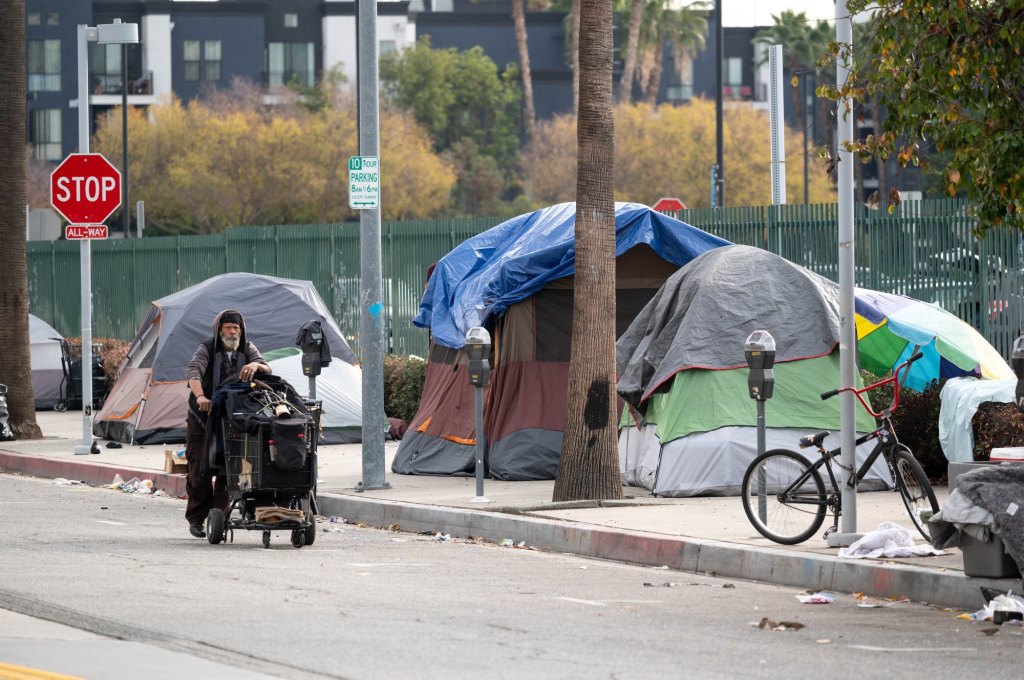Acting under pressure from Gov. Gavin Newsom, the 58 counties of California unveiled a plan on Thursday, March 16 to reduce homelessness by emphasizing transparency, data sharing, better coordination with the state and legislation that removes regulatory barriers blocking new shelters and affordable housing projects.
The “At-Home” plan was released by the California State Association of Counties (CSAC) and billed as a first-ever blueprint by the counties to work together in a coordinated fashion aimed at reducing homelessness and preventing those at risk from becoming homeless.
“It is completely unacceptable to have 170,000 homeless residents in this state. That’s where At Home (plan) comes from,” said Graham Knaus, CEO of CSAC during a virtual news conference.
“We have a system for education, child welfare, criminal justice, but not for those unhoused or in danger of being unhoused. That is not acceptable,” Knaus said.
Six supervisors from the counties of Alameda, Los Angeles, Riverside, San Diego, Stanislaus and Tuolumne, who are also CSAC board members, spoke about different aspects of the plan, which includes dozens of recommendations that would have to be implemented by the state legislature or the governor.
Their remarks illustrated a possible double-edged sword going forward. The supervisors agreed the plan outlines more cooperation among fellow county boards as well as state and federal agencies. But many also criticized the state for putting funding in silos wrapped in red-tape that precludes a continuum of care.
When it comes to obtaining funding for mental health facilities, Los Angeles County has asked the state to waive certain requirements that block such funds. “We are working with the state to file a waiver to increase (mental health treatment) bed capacity,” said Kathryn Barger, L.A. County supervisor of the Fifth District, which includes the Antelope and San Gabriel valleys.
On the issue of developing affordable housing,…
Read the full article here







